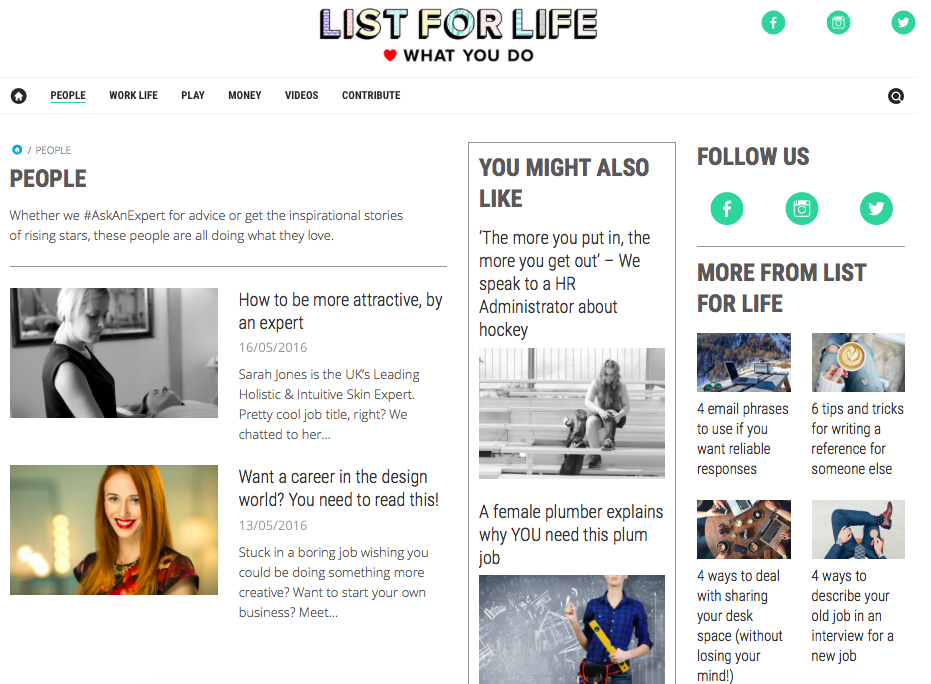
We love the website List for Life, it offers bite-sized advice from an assortment of really talented and inspirational people, which always brightens our day.
The website features vox pop advice about money issues, work/life balance and play, as well as small bios and general pointers from exciting people.
This month they feature an interview with Kia, where she discusses why and how she got to be a London interior designer, the challenges faced along the way and offers advice for any budding young designers out there who are thinking of branching out on their own. You can read the whole interview here.
We thought we’d put together our own list of 5 things you need to know about interior design as a profession:
- You need to be a people person
All the marketing in the world will only get you as far as the client meeting. When someone hires an interior designer, they are really buying into you, so if you can’t sell yourself and connect with potentials clients, you won’t have any. A successful designer is, after all, a people pleaser. You also end up having to be a bit of a mind reader and marriage councillor along the way. You’ll also have to be very good with words and managing people’s expectations, as no matter how many 3D redesigns you produce, you are effectively selling an abstract product and if it isn’t what they are expecting, you’ll need to marry the reality with the dream.
2. It’s not all fabric and fun
The lovely creative design part of the business is probably around 10% of the workload. You’ll need to devote lots of your time to keeping up to date on the latest building regulations, new products and technological advances hitting the market (we’re not talking shiny new vases, we’re talking industrial grades of plaster) home ergonomic reports, eco-friendly developments, on-site practices and insurance procedures. And then there is the paperwork involved with running a project – filing invoices, ordering and specifying products, billing the client, storing the goods and co-ordinating other contractors. Then there is the running of the business, endless data entry relating to receipts, payroll and VAT returns, updating social media, keeping the website and marketing up-to-date, engaging with the press and handling PR, to name but a few.
3. There is no room for your ego
The sad truth is unless you do a Kelly Hoppen and go all out designing your own home (the multi-millionaire partner helps) you may never get to fully design anything for yourself. You will have to swallow any pride and realise it’s the client’s taste, not yours, that counts. So your portfolio might end up filled with projects you aren’t completely happy with, and you’ll be irritated at things when you look back at every photo, but you don’t have to live in the property, they do, and it’s important they get exactly what they want (even if it is a lime green, furry toilet lid.) You also have to really appreciate that other people will live differently to you, and just because you can’t stand drawer fridges and think they are really impractical and break often, doesn’t mean the client feels the same way.
4. You need to be super organised
Your job could be described as ‘organising for the house to be made more attractive and functional’ with an emphasis on ‘organising’. You are juggling many, many balls when undertaking a project, and especially when it comes to bringing in other contractors and co-ordinating deliveries on site. Furniture lead times all vary, and companies can be fairly sluggish, so you’ll need to be chasing up items, sometimes for up to 4 months. You’ll also need to have an impeccable record of what you have ordered to check against the item, incase something has gone wrong in the manufacturing process. Get ready to make a lot of lists…
5. You actually have to be good at it
Sounds obvious, but having a natural flair for putting together fabrics and textures really can’t be taught. Just because you love doing it does’t mean you’ll create suitable schemes for your clients. You’ll need to have an innate flair for colour matching, spacial awareness and architectural styles and heritage. Your service should be adding value to their home, so you’ll need to be sympathetic to existing architecture. Remember, there is a massive difference between designers and decorators.


